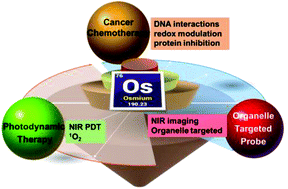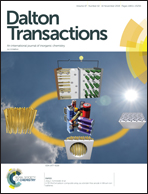Future potential of osmium complexes as anticancer drug candidates, photosensitizers and organelle-targeted probes
Abstract
Recent work has shown that the chemical reactivity of osmium complexes can be finely tuned by the choice of osmium oxidation state, the ligands (including C- and N-bound), and the coordination geometry and stereochemistry, so opening up a wide range of new potential biological and medical applications. Osmium cancer therapeutics can have diverse modes of action and targets, including DNA interactions, redox modulation and protein inhibition. Polypyridyl Os(II) compounds have potential advantages for luminescent cell imaging and photodynamic therapy due to their favourable photophysical and photochemical properties, such as long-wavelength metal–ligand charge transfer (MLCT) absorptions, high photostability and useful near-infrared (NIR) emission. Here we summarize recent progress in the design and application of innovative organo-osmium compounds as anticancer agents with novel mechanisms and as organelle-targeted imaging probes.

- This article is part of the themed collection: 2018 Frontier and Perspective articles


 Please wait while we load your content...
Please wait while we load your content...